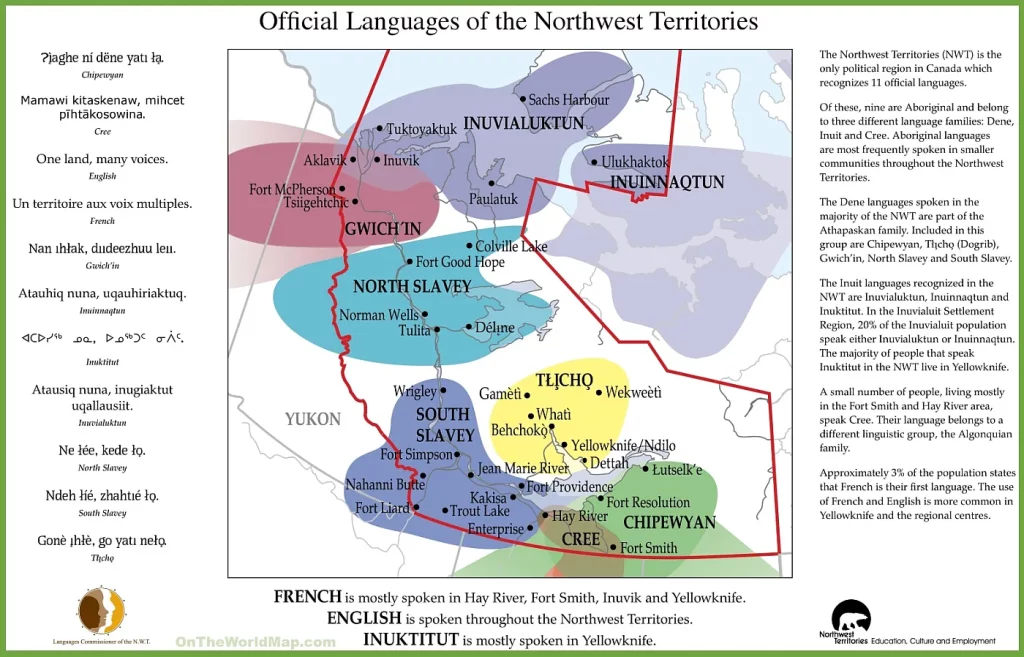The Northwest Territories is a vast and diverse region of Canada, home to stunning natural landscapes, rich cultural heritage, and unique linguistic traditions. From its challenging rivers and national parks to its official languages and weather patterns, the NWT offers visitors many experiences to explore and enjoy. This guide will provide an overview of the various maps, official languages, weather patterns, and safety guidelines that can help visitors make the most of their time in the Northwest Territories.
Northwest Territories Official Languages Map

The Official Languages Map of the Northwest Territories is a vibrant representation of the region’s linguistic diversity, measuring 1579 by 1013 pixels. It celebrates the territory’s unique status in Canada as the only political region that recognizes 11 official languages, including nine Aboriginal languages from three distinct language families: Dene, Inuit, and Cree.
The map indicates the predominant areas where French is spoken, such as Hay River, Fort Smith, Inuvik, and Yellowknife. English, being ubiquitous, is spoken throughout the territory. Inuktitut has a significant presence in Yellowknife, while the Inuvialuit Settlement Region has a notable percentage of Inuvialuktun or Inuinnagtun speakers.
The Dene languages, part of the Athapaskan family, include Chipewyan, Tłı̨chǫ (Dogrib), Gwich’in, North Slavey, and South Slavey, and are spoken across the majority of the NWT. The Inuit languages, comprising Inuvialuktun, Inuinnaqtun, and Inuktitut, are also recognized, with Inuktitut being predominantly spoken in Yellowknife.
Cree speakers represent the Algonquian linguistic family, primarily in the Fort Smith and Hay River areas. Although spoken by approximately 3% of the population as a first language, French and English are more commonly used in Yellowknife and regional centers.
This map is not just a geographical guide but a testament to the cultural tapestry of the Northwest Territories, underscoring the importance of preserving and promoting the linguistic heritage of its people.
Please visit this page for other map resources or Google Maps.
Conclusion
From its linguistic diversity and stunning natural landscapes to its unique weather patterns and safety guidelines, the Northwest Territories is a region that offers visitors a wealth of experiences to explore and enjoy. With the information provided in this guide, visitors can better navigate the NWT and discover all that this beautiful and diverse region has to offer.